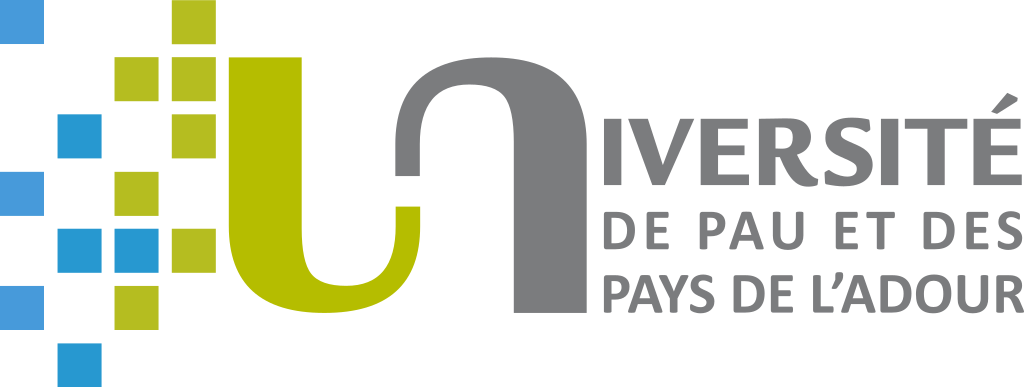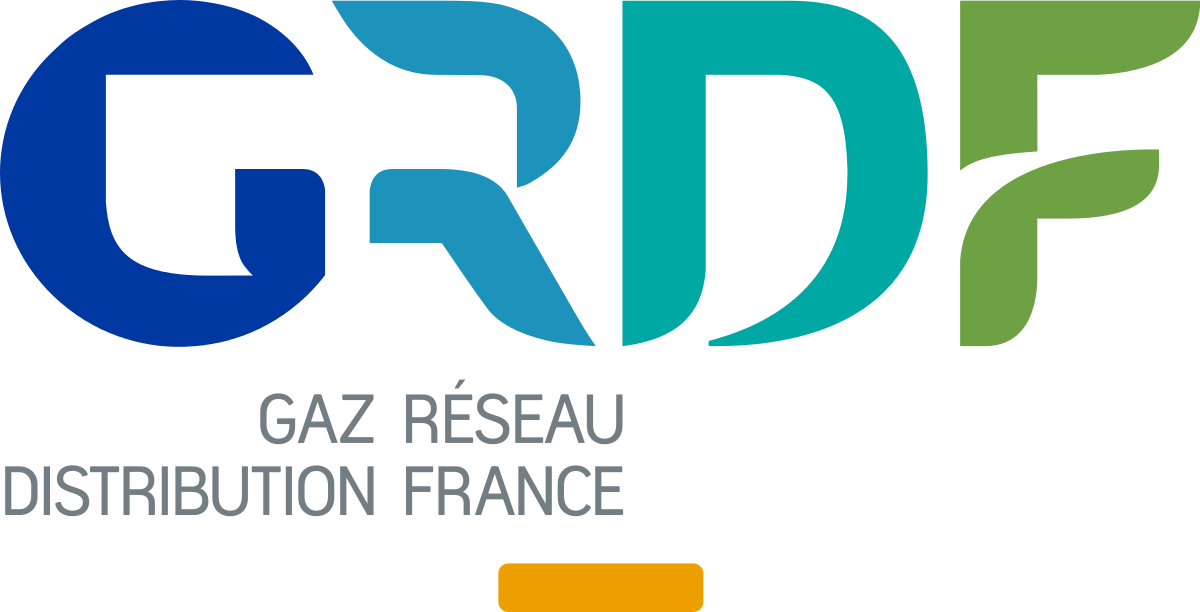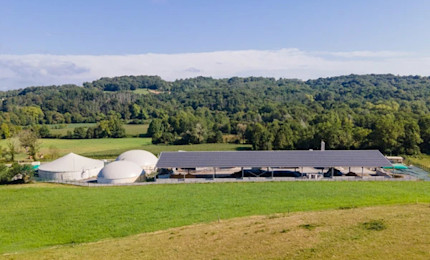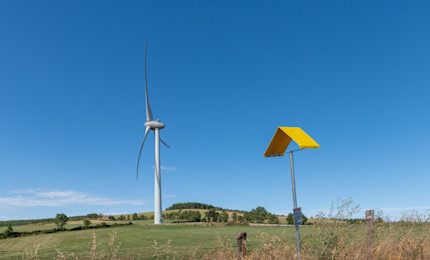Urgence gaz 0 800 028 800

Research & Innovation objective: biomethane and synthetic methane
Increasing the share of renewable energies in global consumption is a crucial challenge for the energy transition. At Teréga, we are actively contributing to this objective by developing Research & Innovation projects intended to encourage the inclusion of biomethane and synthetic methane in our gas storage and transport infrastructure.
Our R&I ambitions relating to biomethane and synthetic methane
As a gas infrastructure operator, Teréga has a role to play in supporting the development of biomethane and synthetic methane. Our objective is to encourage the injection of these gases into our grid while ensuring the safety and integrity of our infrastructure. Our Research & Innovation teams thus have the ambition to:
determine the "gas quality" of biomethane and synthetic methane, as well as their impact on our infrastructure,
refine the thresholds for injecting biomethane and synthetic methane into the storage facilities,
study the different biomethane deoxygenation technologies,
study the design and control of the first methanation unit connected to the grid.
Our R&I projects regarding renewable gases
Teréga's Research & Innovation teams are conducting several projects to study and test solutions in this area. Here are some examples:
The RINGS project: injecting new gases into storage facilities
The RINGS (Research on the Injection of New Gases into Storage facilities) research project aims to anticipate the effects of adding hydrogen and biomethane to the natural gas flow injected into Teréga's underground storage facilities. Indeed, part of these "new" gases could interact with the various components of the subsoil, whether they are aqueous, mineral or microbiological in nature.
Conducted in collaboration with the UPPA (University of Pau and the Pays de l’Adour) and Storengy, the RINGS project consists in reproducing an underground gas storage facility in the laboratory. A three-phase pilot (gas, water, subsoil rock) has thus been built, in which micro-organisms from the storage facility are cultured under subsurface temperature and pressure conditions. The aim is to understand the behaviour of the storage facility, first under current conditions, then with the addition of dioxygen (one of the major trace compounds of biomethane) and/or hydrogen at different rates, representative of national strategies for the injection of renewable gases.
Ultimately, an acceptable limit of hydrogen and biomethane in the injected natural gas will be defined to ensure that there is no negative impact on the storage facility rocks, on the quality of the water in the aquifer and on the micro-organisms that are essential to the balance of the subsoil.

PhD student from UPPA working on the RINGS project.
The CARABIO project: analysis of trace compounds of biomethane
The CARABIO (characterisation of biomethanes) project consists in analysing the trace compounds of biomethanes injected into the French transport and distribution grid. The CARABIO project, which is conducted in partnership with operators GRTgaz, Storengy and GRDF, has analysed more than 500 trace compounds as part of 70 analysis campaigns carried out over the past four years. The biomethane analysed is derived from various waste sources: agricultural waste, household waste, waste from waste water treatment plants, industrial waste, etc.
This CARABIO project allows us to better understand the composition of the biomethane depending on the waste source, but also on the purification process used to transform the biogas into biomethane. Teréga ensures that the trace compound content of the biomethanes analysed make them compatible with the gas quality requirements.
The CorrO2 project: corrosion of steels in the presence of O2
The objective of the CorrO2 project is to evaluate the corrosion rates of well and surface storage equipment steels in contact with the oxygen in biomethane. Thanks to laboratory experiments carried out jointly by Teréga, Storengy and the University of Pau and the Pays de l’Adour (UPPA), the project will make it possible to determine the acceptability thresholds for oxygen in the storage facilities so as to avoid problems of corrosion in our installations.

Banc de test de corrosion du projet CorrO2 dans le laboratoire de l’UPPA.
As long-time partners in research & innovation, Teréga and the UPPA have more firmly established their partnership by creating a joint laboratory dedicated to the study of geological storage of decarbonised gases. The SEnGA (storage of gas energy in aquifers) laboratory is co-led by the two stakeholders. It aims to bring together public and private research to develop innovative solutions for optimal management of decarbonised gases and their storage.
Our R&I projects regarding renewable gases
The SOLIDIA project: development of biogas technologies
The SOLIDIA platform, which is located on the CLER VERTS site in Bélesta-en-Lauragais (Occitanie), will provide an experimental environment for pilot installations in semi-industrial conditions. It should enable innovative technologies relating to methanisation and synthetic methane production through methanation to gain in maturity. SOLIDIA's three main focuses are:
optimal use of biogas,
methanisation processes,
optimal use of digestate.
Operated by INSA Toulouse, the SOLIDIA platform will host various semi-industrial projects such as DEMETHA (biological methanation) and METHAMAG (catalytic methanation) of which Teréga will be a partner. Terega is participating in the construction of the infrastructure alongside INSA. Commissioning is scheduled in 2022. The SOLIDIA platform will be connected to a supply of untreated biogas (60% methane and 40% CO2) produced by the methanisation of household waste at the CLER VERTS plant.
The Jupiter 1000 project: Power-to-Gas
Launched in 2014, Jupiter 1000 is the first French industrial demonstrator of Power-to-Gas technology: the electricity produced by solar or wind farms is turned into hydrogen, a combustible gas, by water electrolysis. This hydrogen can either be injected directly into the natural gas grid or turned into synthetic methane through methanation by combining it with carbon dioxide captured elsewhere.
Power-to-Gas technology is a solution to the problems encountered with the current development of renewable energies such as photovoltaic and wind power: modularity, high fluctuation and storage when production is greater than consumption. Power-to-Gas technology thus makes it possible to sue the excess electricity profitably by turning it into gas that can be injected into gas infrastructure. By creating a synergy between electricity and gas networks, this project is a first step towards a multi-energy grid.
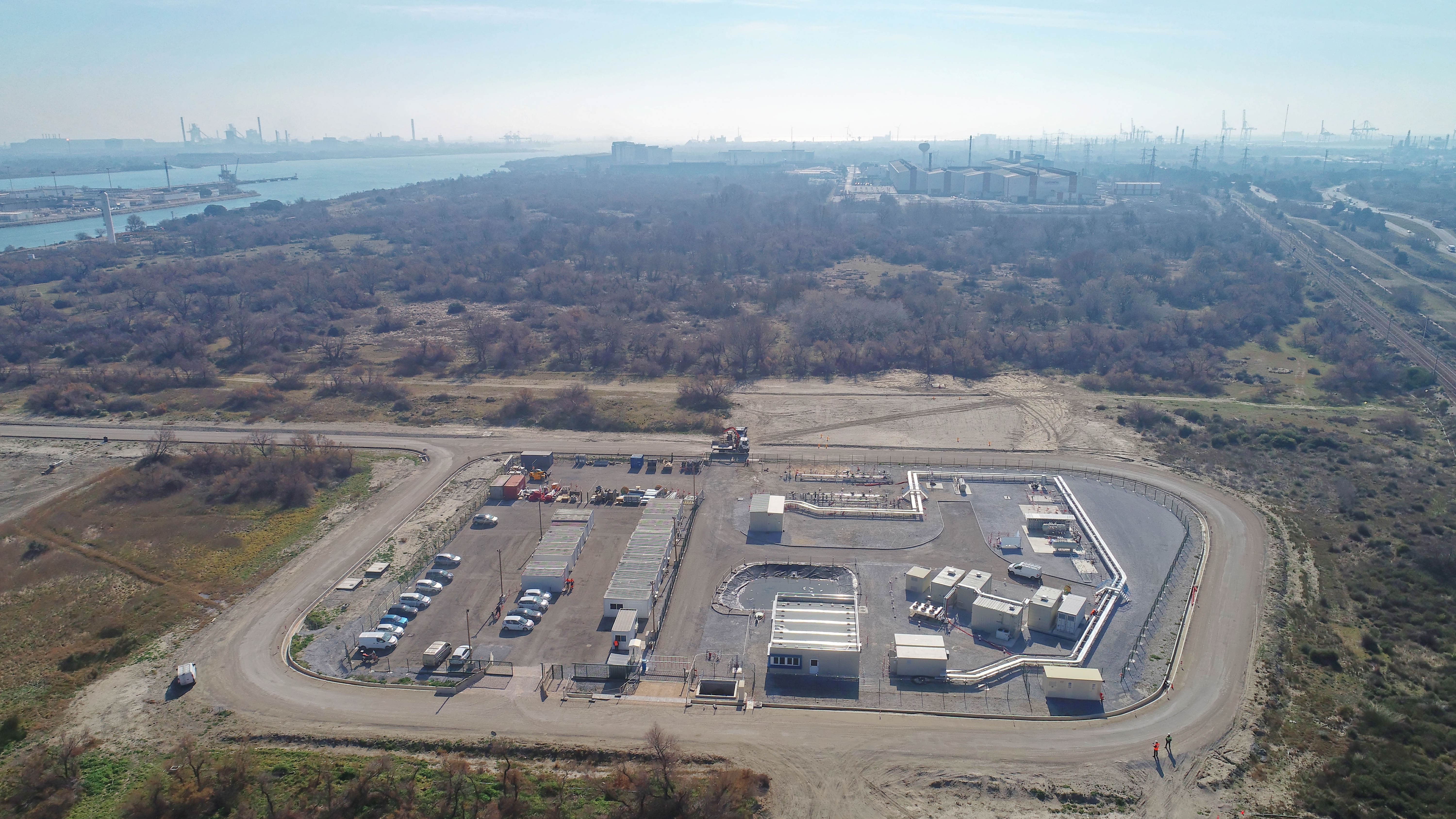
Jupiter 1000 site at Fos-sur-Mer.
Located at Fos-sur-Mer, the project involves various French partners with complementary skills (electricity, electrolysis, gas transport, CO2 capture, etc.), including the gas operators Teréga and GRTgaz, which is leading the project. The purpose of this initiative is to help structure the new Power-to-Gas sector by developing the technologies involved, constructing the associated economic and regulatory models, and overcoming the technical obstacles that exist today.
The project is supported by the ADEME (French Environment and Energy Management Agency), the Provence-Alpes-Côte d’Azur region and Europe.





